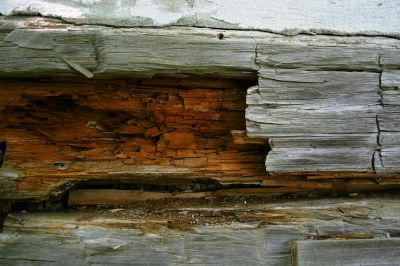Favorite Dry Rot Repair Solutions For Quick And Reliable Fixes
Select from popular products designed to simplify dry rot repairs and ensure a sturdy, safe environment.
 Dry rot is a common issue in wooden structures that can compromise the integrity and safety of buildings if not addressed promptly. It is caused by fungal decay that thrives in moist, poorly ventilated environments, leading to the deterioration of wood over time. Repairing dry rot involves identifying affected areas, removing compromised wood, and applying specialized treatments to prevent future growth. The process often requires a combination of products designed to eliminate fungi, reinforce remaining wood, and protect against moisture ingress.
Dry rot is a common issue in wooden structures that can compromise the integrity and safety of buildings if not addressed promptly. It is caused by fungal decay that thrives in moist, poorly ventilated environments, leading to the deterioration of wood over time. Repairing dry rot involves identifying affected areas, removing compromised wood, and applying specialized treatments to prevent future growth. The process often requires a combination of products designed to eliminate fungi, reinforce remaining wood, and protect against moisture ingress.
Top Overall Option
Comprehensive Dry Rot Treatment Kit
This all-in-one kit provides a selection of fungicidal solutions, consolidants, and sealants designed for thorough dry rot repair. It offers a comprehensive approach suitable for various levels of damage, ensuring deep penetration and long-lasting protection. The kit is user-friendly, making it accessible for DIY repairs while also meeting professional standards.
Types of Products For Dry Rot Repairs
Fungicidal Wood Preservatives
Chemical solutions formulated to eliminate fungal spores and prevent future growth in affected wood.
Wood Consolidants
Products designed to penetrate and strengthen decayed or weakened wood structures.
Waterproof Sealants
Sealants that create a moisture barrier to protect repaired areas from future water intrusion.
Dry Rot Removal Pastes
Specialized pastes used to fill and replace decayed wood, providing structural support.
Moisture Barriers
Materials that prevent moisture from reaching vulnerable wood surfaces.
Surface Primers for Wood
Primers that prepare surfaces for painting or sealing after treatment.
Application Brushes and Rollers
Tools designed for even application of treatments and sealants.
Protective Gear
Safety equipment such as gloves and masks to ensure safe handling of chemicals.
Dry Rot Detection Kits
Testing kits that help identify the presence and extent of dry rot in wood.
Structural Reinforcement Products
Materials used to reinforce and stabilize weakened wooden structures.
Popular Choices
Widely used products for treating affected wood and preventing fungal growth.
Popular consolidants that restore strength to decayed timber.
Commonly selected sealants to create moisture barriers after treatment.
Frequently used fillers for replacing decayed wood sections.
Trending coatings that protect surfaces from water penetration.
Essential brushes and sprayers favored for even treatment application.
Popular testing tools for early detection of dry rot.
Common safety gear kits for safe handling of chemical treatments.
Preferred products for stabilizing compromised wood structures.
Frequently chosen primers to prepare surfaces for sealing or painting.
Effective dry rot repair products are formulated to penetrate deeply into affected wood, ensuring thorough treatment of the fungal spores. Many solutions include fungicidal agents that inhibit further fungal development, along with consolidants that strengthen weakened timber. Proper application is crucial to ensure the longevity of the repair and to prevent recurrence. In addition to chemical treatments, some products offer barrier coatings or sealants to protect repaired areas from moisture and future fungal attack.
When selecting products for dry rot repairs, it is important to consider the extent of the damage, the type of wood involved, and the environmental conditions of the area. Using the right combination of treatments can help restore structural integrity and extend the lifespan of wooden components. Professional consultation is often recommended for extensive damage, but many DIY-friendly options are available for smaller repairs. Always follow safety instructions and wear protective gear during application to ensure safe handling of chemical products.
Key Buying Considerations
- Extent of damage: Assess whether the dry rot is localized or widespread to choose appropriate treatment solutions.
- Type of wood: Different products may be suitable for various wood types; ensure compatibility with your specific material.
- Application method: Consider whether the product requires brushing, spraying, or paste application based on your repair needs.
- Penetration depth: Look for products designed to penetrate deeply into decayed wood for effective treatment.
- Protection duration: Evaluate how long the treatment is expected to provide protection against future fungal growth.
- Ease of use: Select products that match your skill level, especially if undertaking DIY repairs.
- Safety precautions: Always consider the safety instructions and required protective gear when handling chemical products.
- Compatibility with existing treatments: Ensure new products do not interfere with previous repairs or treatments.
- Environmental conditions: Consider humidity, ventilation, and moisture levels in the repair area.
- Cost and quantity: Balance the product's cost with the amount needed for your repair project.
- Brand reputation: Choose products from reputable manufacturers with positive user feedback.
- Availability of supplementary products: Check if additional items like primers or sealants are needed for complete repair.
- Dry rot detection: Use detection kits if unsure about the extent of fungal presence before treatment.
- Long-term maintenance: Consider products that offer ongoing protection or require minimal maintenance.
- Regulatory compliance: Verify that products meet safety standards and regulations.
This content may contain affiliate links. We may earn commissions from qualifying purchases to support our work.
